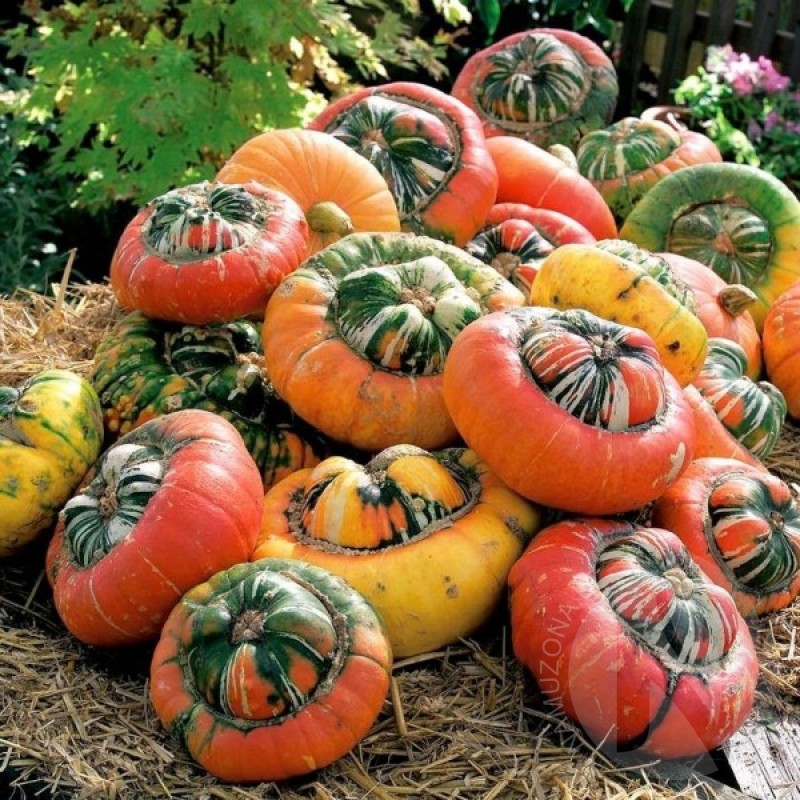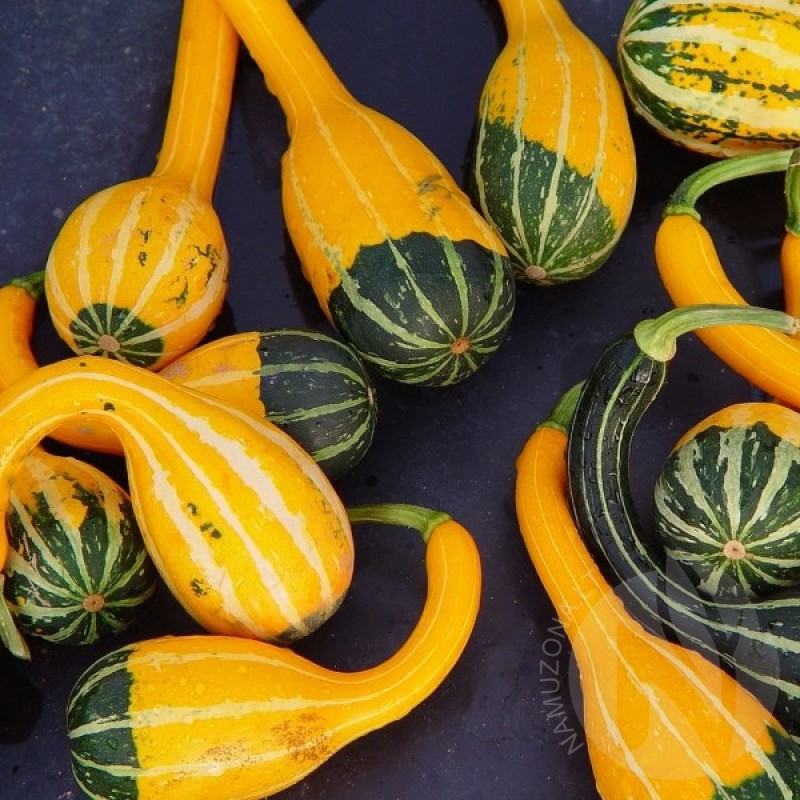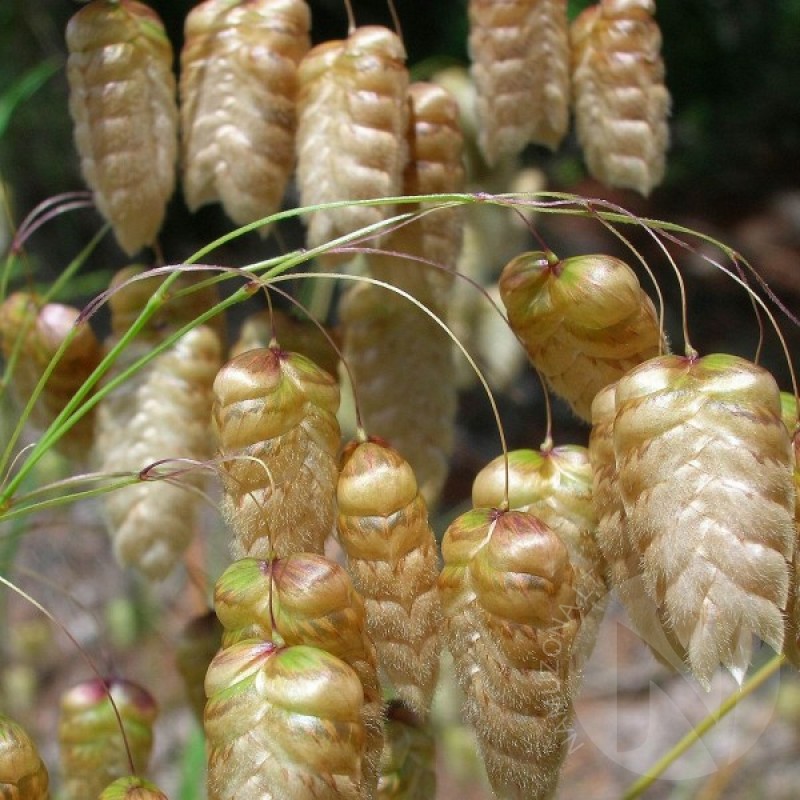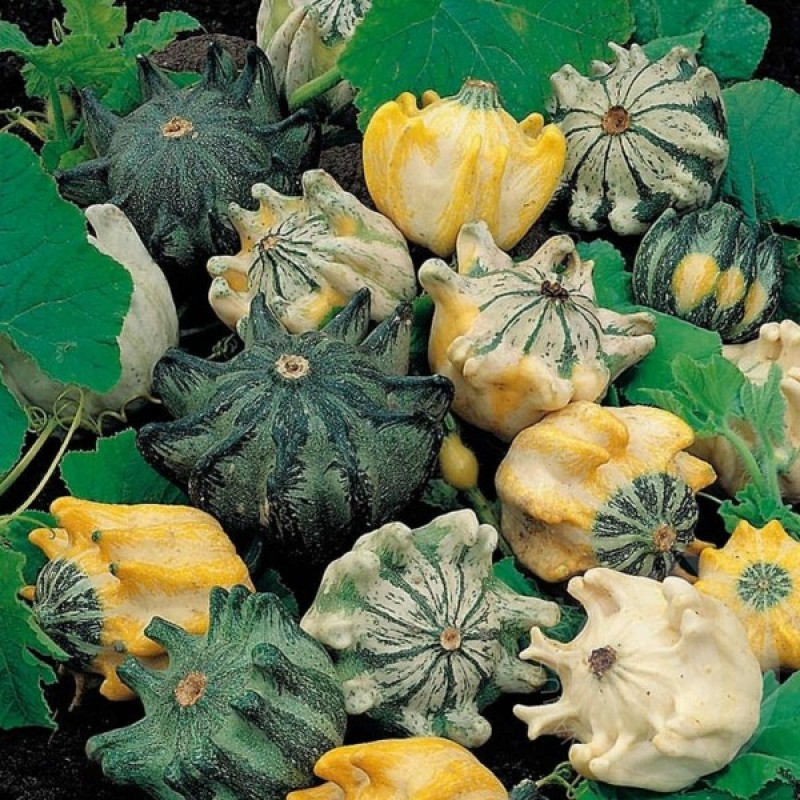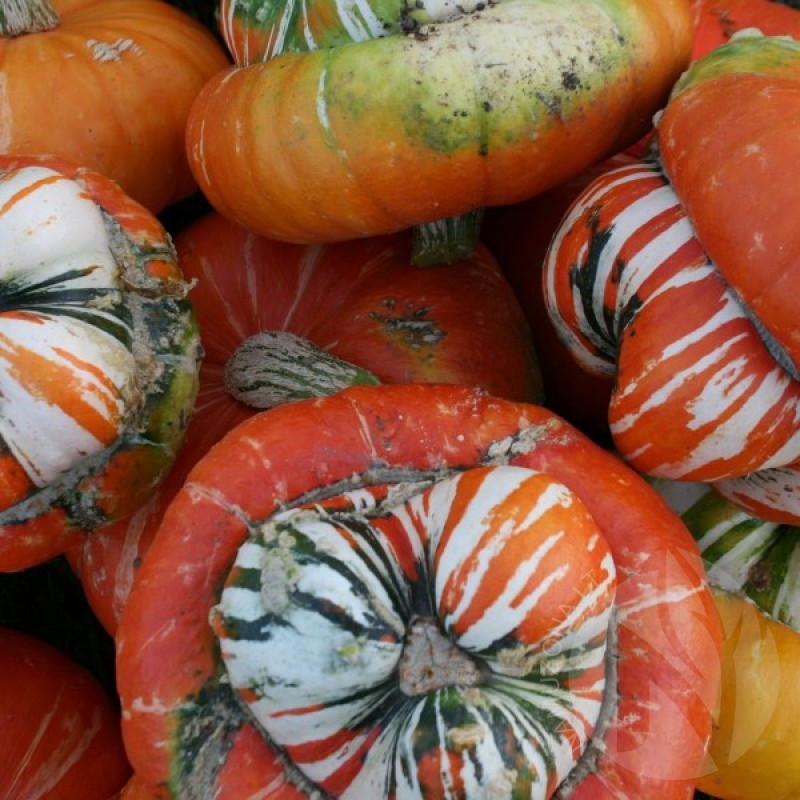
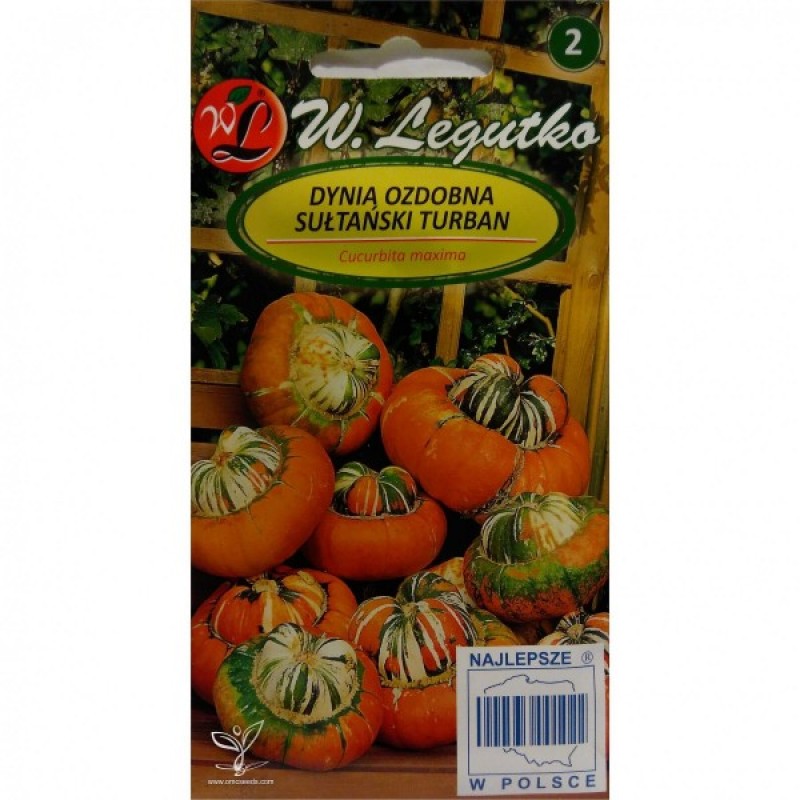
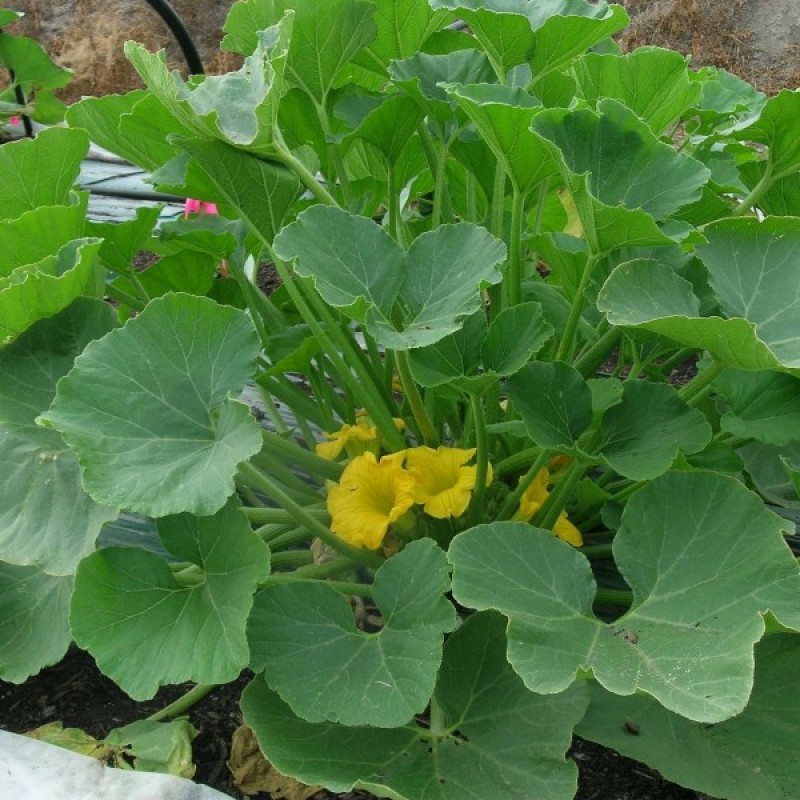
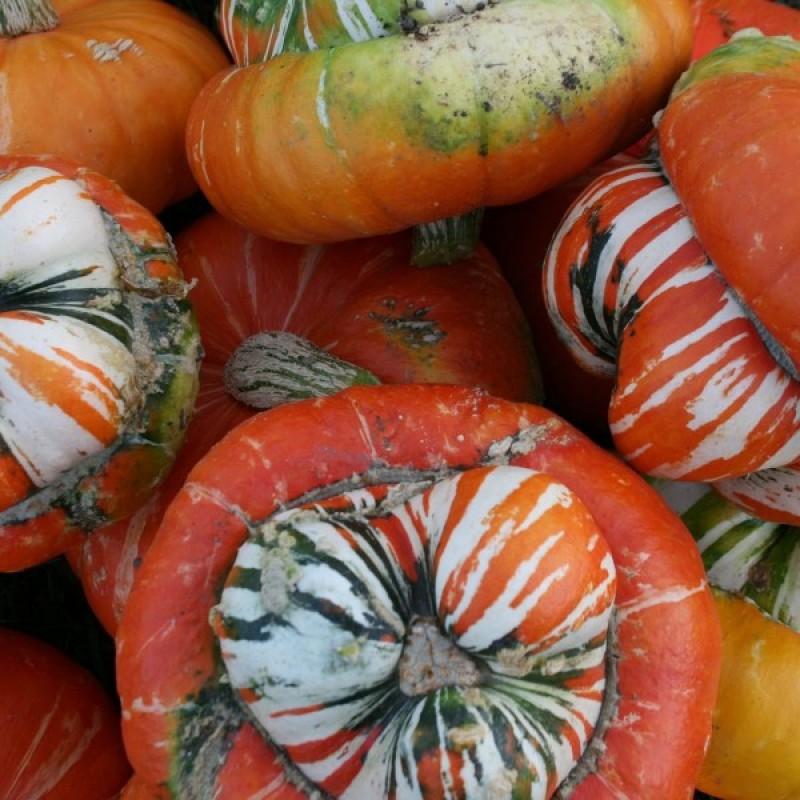
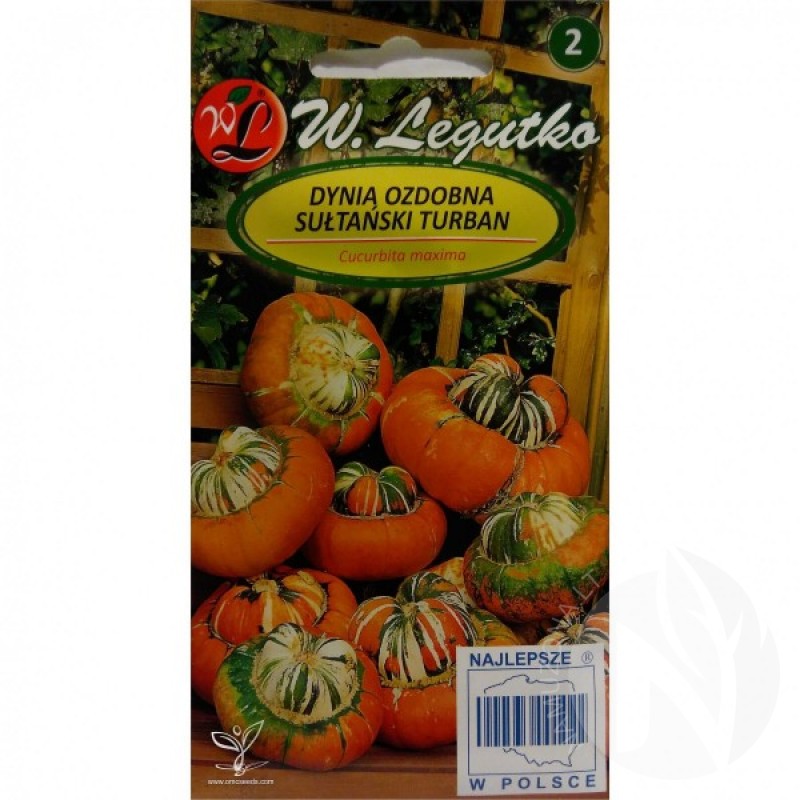
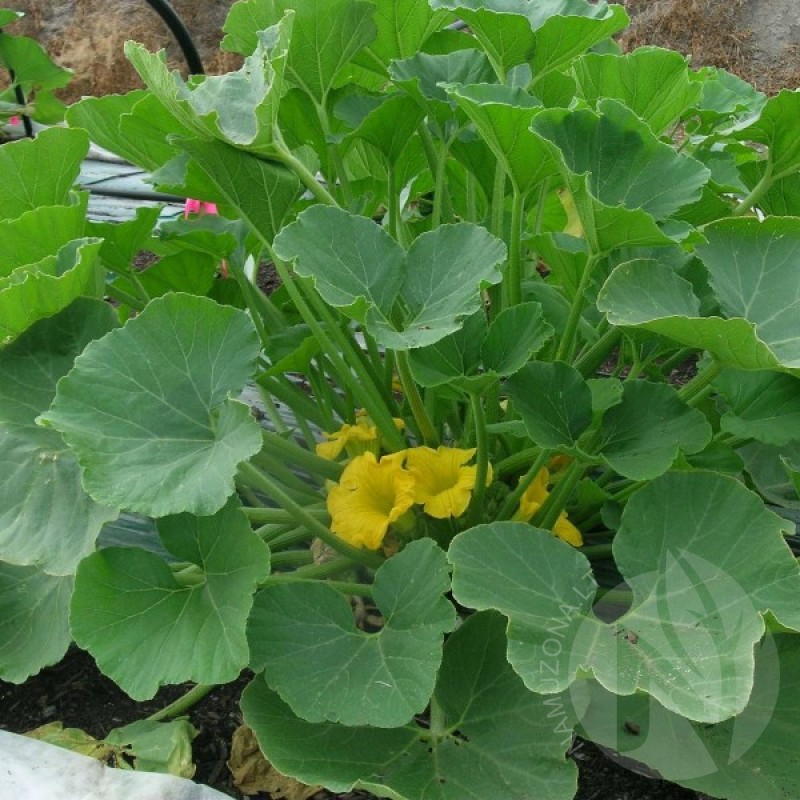
PAY ATTENTION!
All seeds (except SOLD OUT) are available for immediate shipping and will be dispatched within 1-2 business days.
INFORMATION NEEDED? PLEASE CONTACT US NOW!
A classic choice for autumn displays, the festive, multicolored fruits of ‘Turk’s Turban’ are unmistakable. The main body of this squash is flattened and bright red-orange, sometimes marked with dark green streaks. The blossom end bears a prominent, bulbous protrusion striped randomly with orange, green and white. Although used primarily for decoration, this old heirloom is of reasonably good eating quality. It also keeps well. Fruits ripen approximately 110 days from sowing.
Cultivated since ancient times by Native Americans, winter squash are warm season, annual vines native to tropical South America. The rambling stems of these plants bear large, golden yellow, trumpet shaped blossoms. Both male and female flowers occur on the same plant, and are pollinated by bees. The male flowers appear first, followed by the female flowers which can be recognized by the distinctive, bulbous ovaries at their bases. Following pollination, the female flowers develop into fruits; these are often masked by the plant’s huge, bristly, lobed leaves.
Sow the seeds of winter squash directly in mounds of rich, light, well-drained soil after all danger of frost has passed. Full sun is required for successful flowering and fruiting. To reduce the risk of fungal problems, avoid unnecessary wetting of vine stems and leaves. Monitor closely for leaf bugs and beetles, and for stem borers at the bases of the vines. As fruits mature in autumn, deer, birds and rodents may browse them, so protect as needed. Harvest before heavy frosts when the vines begin to brown and the rind is firm and solid in color. Cut from the vine leaving a short stem, taking care not to cut or bruise the fruits. Store in a cool, dry location, leaving space for air circulation to discourage the spread of mold.
Information source: http://learn2grow.com/plants/cucurbita-maxima-turks-turban/
Approximately 10 seeds in 2g packet.
Genus - Cucurbita
Species - Maxima
Variety - Turks Turban
Common name - Winter Squash
Pre-Treatment - Not-required
Hardiness zones - 3 - 10
Height - 0,30 - 0,90 m
Spread - 0,90 - 6 m
Plant type - Ornamental climber
Exposure - Full Sun
Growth rate - Fast
Soil PH - Neutral
Soil type - Loam
Water requirements - Average, high
Landscape uses - Herb / Vegetable, Vine
Bloom season - Early Summer, Summer, Late Summer, Early Fall
GERMINATION INSTRUCTIONS
Sow inside in April or outside in May after the last frost.
1. Place peat pots in a tray and fill the pots with potting soil. Prefer rich soil. Fill the tray with water and let the peat pots absorb the water. Discard any excess water left in the bottom of the tray.
2 Poke a couple of holes in the soil 2cm deep with your finger. Place one seed in each hole and cover with soil. Each pot should contain two or three seeds to ensure that at least one seed germinates in each container.
3. Place a plastic tray cover over the top of the peat pots to create a greenhouse. Set the tray in a warm area out of direct sunlight. Direct sunlight dries the soil out quickly and can cook the seeds. Summer squash sprouts take about two weeks to appear.
4. Remove the cover when the seedlings start to touch the cover. When the seedlings are 5 cm tall, remove the weak seedlings so there is just one plant per container.
5. Transplant the summer squash seedlings outside when the soil and air temperatures stay above +15C. Plant the seedlings at least 50-60 cm apart, dropping the entire pot in the hole so you do not disturb the roots.
Information source: http://homeguides.sfgate.com/germinate-cucurbita-pepo-seeds-38463.html
No questions about this product.

